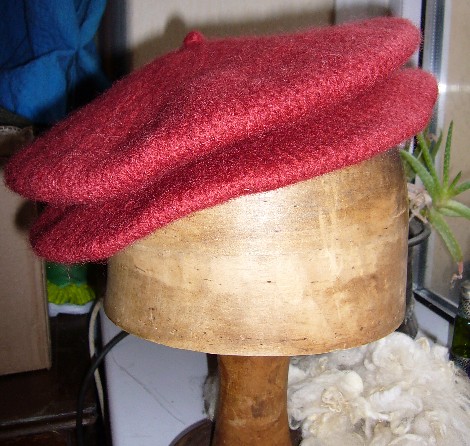As a result, there seems to be some good reasons to think that the broad brimmed version might be a challenger for this name, and the museum one might be better renamed the Monmouth Labourer's Cap. There is a very handy booklet available that goes into the current arguments for and against in the form of Monmouths and Monteroes. A confusion of caps. by Robert Morris available from Stuart Press.
Even more confusingly, for years, I and many other re-enactors and 'historic knitters' have tended to refer to this broad brimmed style as a 'Peter the Great' hat, after a famous surviving example in the Hermitage collection. Muddling, isnt it?
Whatever we end up calling it, and its entirely possible it will take a while for a generic name to settle on it, I've been working on different ways to reconstruct a plausible pattern of this very warm and useful hat, and here's the result that I feel gives the best result:

This is it before fulling, and here it is after fulling and modelled by my trusty (and long suffering, this photo was taken when the hat was still wet on a rather chilly afternoon) stunt head, Gareth:

its now available as part of my range of historic hat patterns, all of which come with a brief discussion of the style and footnotes to provide references to supporting information, either in hardcopy through the shop at www.sallypointer.com/shop (£2.50) or as a Ravelry Download ($4).














